High blood pressure can cause anxiety, nervousness, heart problems, and even lead to heart disease and chronic hypertension.
The foods you eat dramatically impact how healthy your blood pressures are; medications will also affect this area of your health too.
The Importance of Blood Pressure Health:
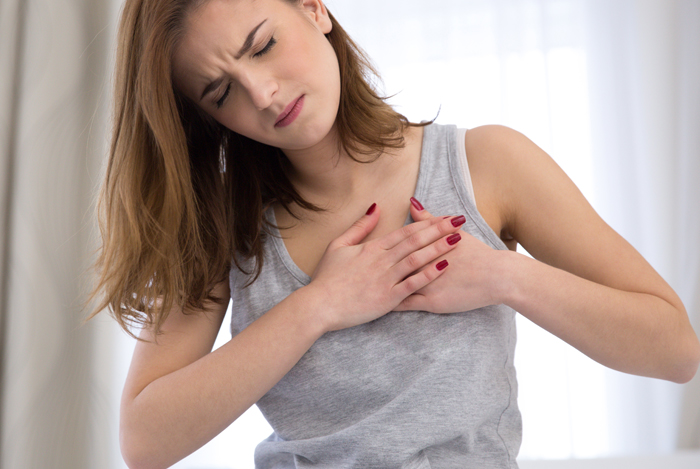
When it comes to preventing and treating high blood pressure, improving blood flow should be the number one priority. When blood can flow through the arteries as it should, pressure doesn’t build up and lead to the inability of blood to reach the heart and brain as it needs to.
Most people understand that lowering or eliminating the amount of sodium in their diets is a top priority. Sodium restricts blood vessel walls and also causes water retention in the body.
Salt also acts as a sponge in the body, soaking up excess fluid and slowing down blood flow. It doesn’t just make you puffy and bloated; salt also interferes with the way your vessels constrict and how healthy your endothelial cells in your arteries are.
Overtime, high blood pressure can lead to kidney stones, coronary artery disease, memory loss, a heart attack, angina, a stroke, vision loss, and more.
Are you Affected?

People who eat a diet high in processed foods (such as convenience foods), restaurant food, or use a lot of processed foods in their home are all at risk for high blood pressure because sodium and added salt (along with unhealthy fats and sugars) are commonly added to these sources of foods.
As you age, you’re also at a greater risk for high blood pressure; all men, women over age 65, and individuals who are obese, smoke, or have current heart problems also face a greater risk of having high blood pressure.
What’s a Normal Blood Pressure Reading?
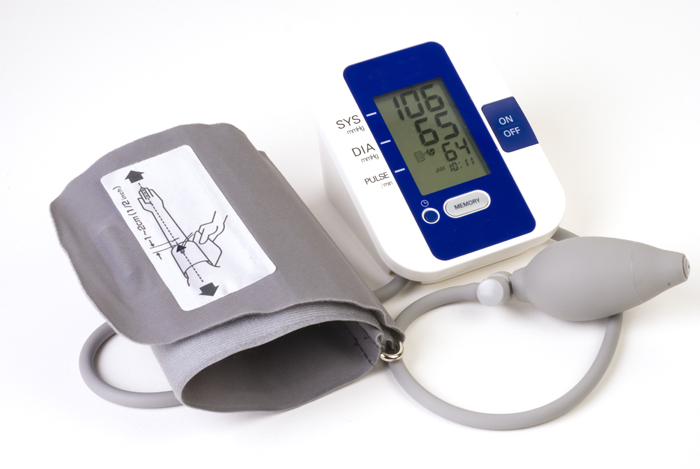
When you get your blood pressure tested by a doctor, you’ll receive a reading with two numbers that sit on top of one another. The first number is your systolic blood pressure; the second is your diastolic.
The systolic number should always be higher than the diastolic number and is the measurement of the pressure in the arteries when the heart beats (in other words, when the muscle contracts). A normal systolic reading is anything less than 120.
The diastolic number is the measurement of the pressure in the arteries between heartbeats, or when the heart muscle is resting between beats). This is when your heart refills with blood and is important for measuring how healthy your arteries are able to bring blood to the heart. A normal diastolic number is anything less than 80.
You’re considered at risk for high blood pressure if your systolic number (the top number) is anywhere from 120- 139 and your diastolic number (the bottom number) is anywhere from 80 – 89. This is known as prehypertension and requires immediate changes to be made to your diet and lifestyle in order to prevent hypertension.
Chronic high blood pressure leads to hypertension; there are 2 stages of hypertension that you should be aware of. The first stage is any reading of 140-149/90-99 and the second stage is 160 or higher/100 or higher.
Anything more than stage 2 of hypertension is considered an immediate emergency since this is where serious heart damage can occur.
How To Reduce High Blood Pressure Through Your Diet:
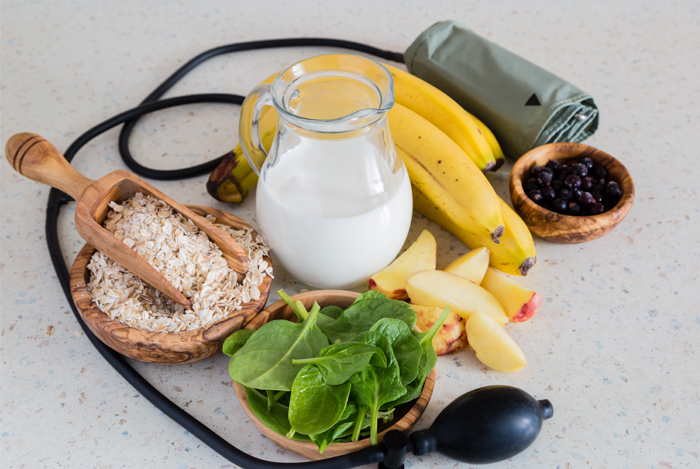
In order to prevent and treat high blood pressure, it’s important to eliminate or dramatically reduce the processed foods in your diet. Processed foods, restaurant foods, and fast food all contain added salt, sugar—and many times—unhealthy oils, preservatives, and even common allergens.
Hidden sources of salt are also everywhere; they lurk in bread, cheese, yogurt, milk, cold cuts, sandwiches, frozen foods, condiments, pickled foods, and many fermented foods.
Concentrate on eating more fresh foods such as fruits, vegetables, legumes (beans, peas, and lentils), and whole grains. These foods are full of natural flavor all by themselves and can dramatically lower blood pressure as well as improve heart and weight health.
Start replacing the unhealthy foods in your current diet with more healthy options for your heart instead of focusing on what you’re no longer going to be eating. And speaking of healthy foods for your heart, here are 10 easy-to-find options you can find at your local grocery store.
10 Powerful Foods That Reduce High Blood Pressure and Improve Your Blood Flow
1. Celery

Funny enough, celery is a natural source of sodium but it’s also one of the best foods to lower your blood pressure and improve blood flow.
All natural foods contain natural elements of sodium; after all, sodium is a mineral that is found in the soil and therefore, natural foods. But unlike packaged foods, celery has no added sodium in it which is what’s important.
Celery is also high in potassium like all plant-based whole foods. Potassium counteracts sodium in the body and improves blood flow as well as reduces water retention.
On top of that, celery also has a high water content , is alkaline which balances the blood pH levels, and it even improves nervous system function. Best of all, celery can be enjoyed as a snack or flavorful addition to soups, salads, and it can be made into a healthy vegetable juice.
2. Beets

Beets may not sound too appealing to you at first, but give them a second thought.
Beets are incredibly high in potassium as well as natural nitrates which are compounds that improve arterial health. Beets help open up artery walls allowing more blood to flow through; they’re also rich in several key minerals such as manganese and potassium.
Boil beets, grate them and eat them raw in salads, juice with them, or add them to a soup. Beets also take on a wonderful, caramelized flavor when dry roasted on a pan with some salt-free herbs and spices such as oregano (which is also helpful for reducing high blood pressure and high cholesterol).
3. Leafy Greens
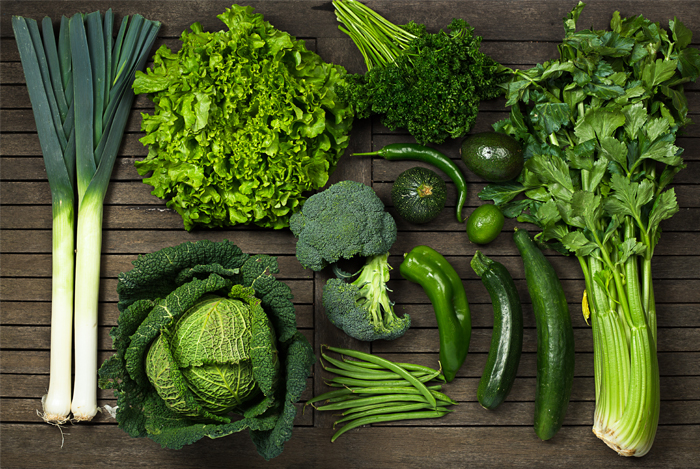
Make yourself a salad, soup, or a green smoothie; just be sure you eat your leafy greens every single day!
Leafy greens such as romaine, spinach, kale, collards, arugula,—and even many simple lettuces—are all packed with potassium and compounds that lower your blood pressure and improve blood flow.
Some greens, (such as kale, romaine, and spinach), are also high in magnesium and Vitamin C which improves nervous system health and blood pressure as a result.
Aim to eat 3 cups of greens per day, no matter how you enjoy them. Just avoid cooking your foods in oil and unhealthy fats like butter which can all hurt your heart and lead to other heart problems over time.
4. Bananas

Bananas are well-known for their high potassium content but they contain many other nutrients that benefit your heart too. Bananas are excellent sources of magnesium, Vitamin B6, manganese, and the amino acid tryptophan which all improve nervous system health and help reduce anxiety that can lead to high blood pressure.
Bananas’ high potassium content make them helpful for counteracting sodium in the body and it can also improve muscle contractions due to the way it enhances blood flow.
5. Potatoes

If you’re scared of potatoes because they’re a natural source of complex carbs, you’re missing out on one of the healthiest foods on the planet. Potatoes are excellent sources of potassium and contain three times as much as bananas!
They’re also higher in Vitamin B6 and iron than most fruits and vegetables, and they are packed with magnesium, copper, and zinc as a bonus.
All potatoes are wonderful sources of nutrients, including the white ones that many people avoid.
If you have sensitive blood sugar levels, go for red potatoes, purple potatoes, or sweet potatoes which have a little more fiber and less sugar per serving. Otherwise, Russet, Yukon gold, and other yellow potatoes are wonderful and affordable foods to eat in order to lower your blood pressure naturally.
So long as you don’t pile your potatoes with butter, sour cream and cheese, they won’t make you gain weight. Use toppings such as fresh herbs, spices, and squeeze a little lemon on top which can trick your taste buds into thinking you ate salt (sour and salt taste buds sit near one another on the tongue).
No-salt-added or fresh salsa and black beans also make for a healthy topping to potatoes. Another option is to dry-roast your potatoes on a pan with fresh herbs and salt-free spices where they take on a nice caramelized flavor.
6. Apples

Apples are incredibly high in potassium and Vitamin C, two powerful nutrients at improving heart health. Apples are also great sources of fiber and water which help to reduce high blood pressure and cholesterol from the body.
It’s best to choose organic apples since conventional apples are one of the worst sources of pesticides, and it’s optimal to choose whole apples over applesauce or juice.
Eating one apple a day is a great way to protect your heart and it may even help you lose some weight too!
7. Flaxseed
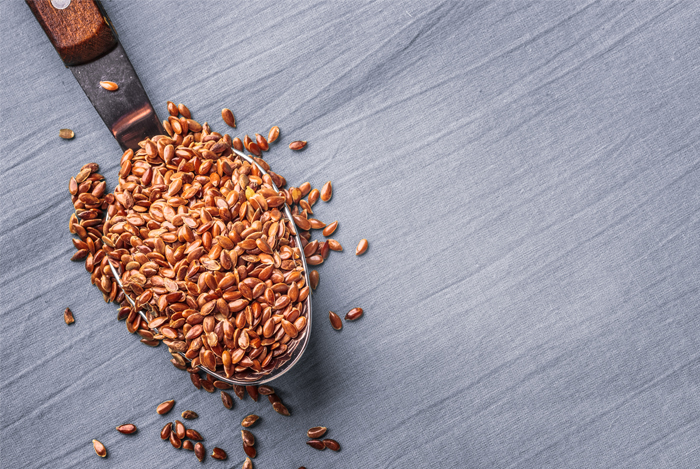
Ground flaxseed can provide you with all the necessary essential fatty acids that you need for optimal health, and it’s one of the best foods to eat in order to reduce high blood pressure and improve your blood flow.
Flax is also high in compounds known as lignans which help reduce high cholesterol and improve blood flow further.
8. Berries

Berries are also wonderful sources of potassium, Vitamin C, and many trace minerals. Their high fiber content also makes them useful for reducing and preventing high cholesterol, diabetes, and heart disease when eaten in accordance with a healthy diet.
Berries are also great sources of antioxidants which help relax the body and improve blood flow. As a result, they can help escort harmful toxins that can cause arterial build-up (such as too much fat or cholesterol) out of the body and improve overall heart health.
Berries are also great for managing your weight and are low on the glycemic index so they won’t spike your blood sugar. Enjoy fresh or frozen raspberries, blueberries, blackberries, cranberries, and strawberries whenever you can; work at least 1 cup into your daily meals and/or snacks for optimal benefits.
9. Broccoli

The vegetable many of us grew up hating is also one of the best for your heart. Broccoli is packed with nutrients that improve blood flow such as potassium, Vitamin C, Vitamin B6, and it’s a great source of fiber as well.
To get the most benefits from broccoli, eat it raw or lightly steamed. Boiling broccoli often leaches out the nutrients that it contains into the water. If you cook broccoli at a high heat, such as in a soup where you’re consuming the cooking liquid, feel free to cook it as you want.
Instead of salt, season your broccoli with black pepper, herbs, and in place of oil, use no salt added vegetable broth if you need more flavor. Otherwise, just enjoy your broccoli plain!
10. Squash (all types)

Winter or summer squash (which includes zucchini) is an excellent food to reduce high blood pressure and improve blood flow. It’s incredibly rich in potassium, Vitamin B6, Vitamin C, and many trace minerals.
Choose from butternut, spaghetti, acorn, kabocha, and other types of winter squashes when they’re available. Zucchini and summer squashes (such as yellow squash) also count too.
To make squash taste delicious without salt, oil, or butter, cut them into strips and grill them, or chop them into wedges and roast them on a pan with some Italian seasonings, lemon juice, and black pepper.
Since winter squashes have a hard shell and can be difficult to chop into slices, roast them whole at 400 degrees for 50 minutes, let them cool, and then slice them open, season, and serve as desired.
Don’t Miss These:
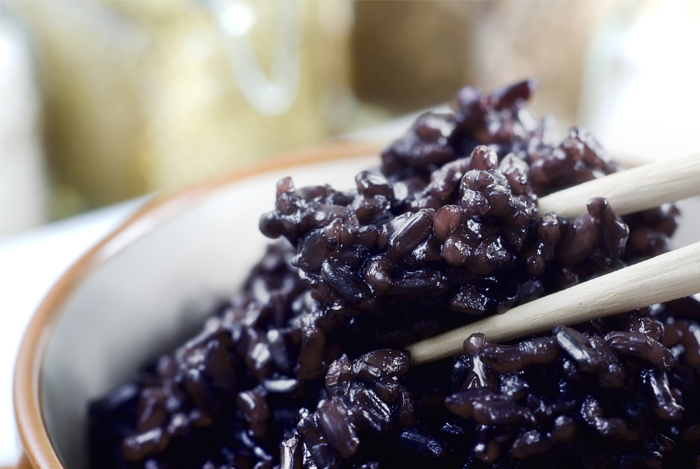
Whole grains and legumes are excellent foods to improve your heart health, along with all other types of fresh fruits and vegetables.
Here’s a great list of foods to pick up at the store this week:
- Wild rice
- Oatmeal
- Oat Bran
- Brown or black rice
- Quinoa
- Lentils
- Black beans*
- Cannellini beans*
- Kidney beans*
- Frozen or fresh peas
- Frozen or canned black eyed peas*
- Split peas
- Chickpeas*
- All fruits and vegetables (except dried fruits with added sugars)
Items marked with an asterisk often come in cans, so be sure if you buy these in a can that you purchase brands that contain no added salt. Many organic brands are also available in both BPA-free cans and tetra packages that have no added sodium.
Some nuts and seeds can also benefit your health when eaten in moderation and eaten in their raw (unroasted and unsalted) state. These include:
- Almonds
- Walnuts
- Cashews
- Pumpkin seeds
- Sunflower seeds
- Chia seeds
- Hemp seeds
- Pecans
Keep portions of nuts and seeds to 1-2 tablespoons (1-2 ounces) a day in order not to consume too much dietary fat, even from healthy sources. While many people can handle more amounts of fat in their diet, individuals concerned about heart health should still watch how much they consume.
Other contributing factors to high blood pressure:

Diet is the most influential factor on your blood pressure levels but it’s certainly not the only one. Below are four other risks that can also lead you to suffer from high blood pressure along with heart disease and other health problems.
- Lack of activity
- Stress
- Second hand-smoking and smoking
- Or preexisting health problems such as kidney abnormalities or narrowing of the arteries.
It’s important to get regular exercise and stay active, get enough sleep and manage stress, stop or don’t start smoking, and keep track of your health records in order to prevent high blood pressure and other health problems.
The Choice is Yours:
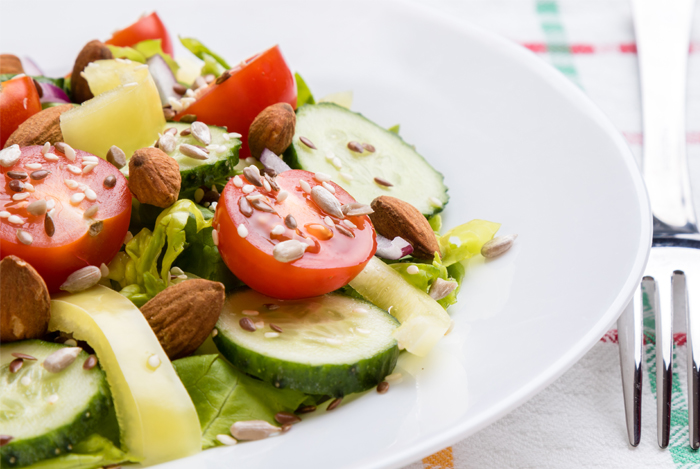
If you fill your diet with whole foods, eat less processed foods and consume more of your meals at home where you have control over what goes in them, you’re already on your way to improving your heart health. After that, practice good lifestyle habits and your health will improve dramatically.
Remember, you can take complete control of your heart health now with the choices you make each day, starting with what goes in your fridge and on your fork. So head to the grocery store, and say hello to a healthier you in no time!
The post 10 Foods That Reduce High Blood Pressure and Improve Blood Flow appeared first on Nutrition Secrets.
http://www.nutritionsecrets.com/10-foods-that-reduce-high-blood-pressure-and-improve-blood-flow/
No comments:
Post a Comment